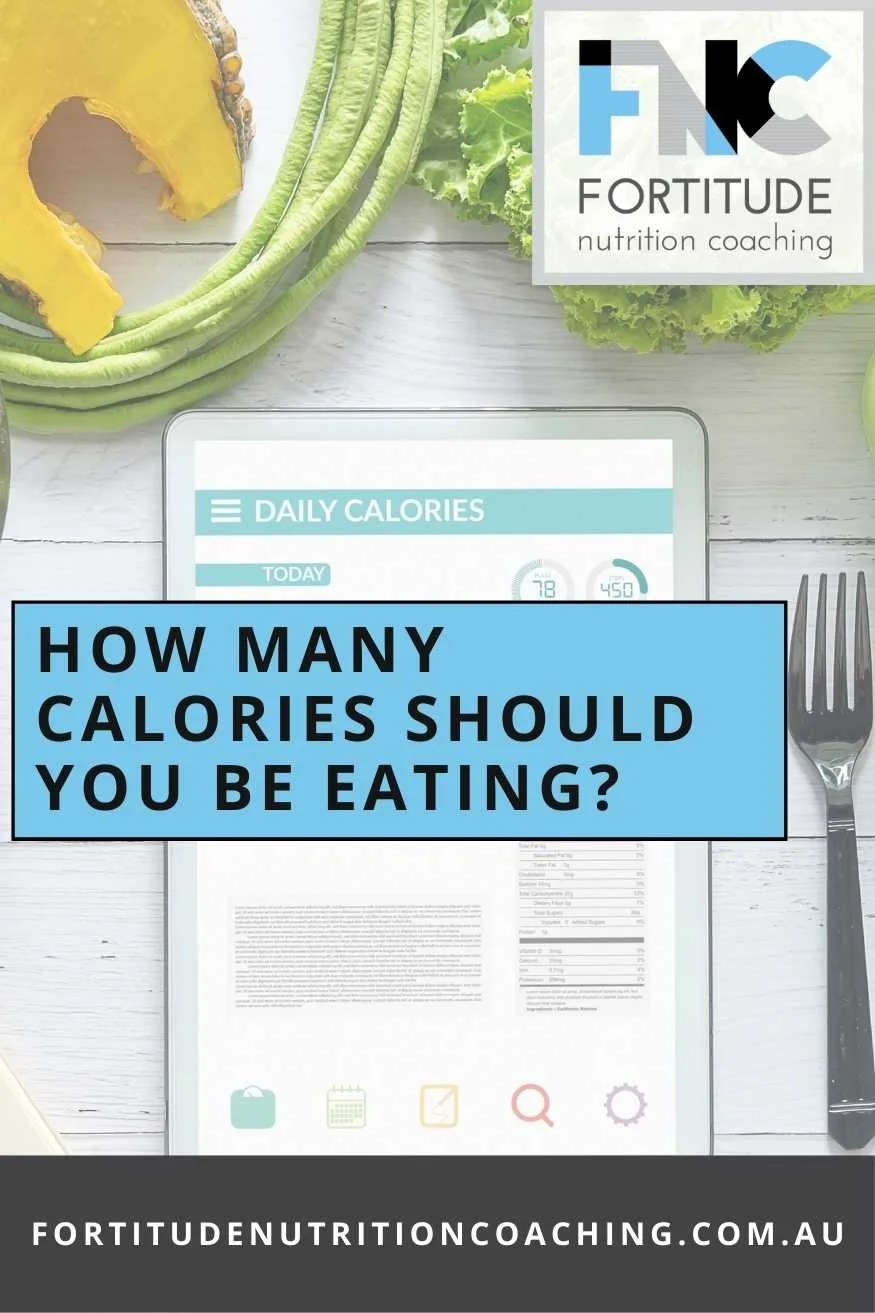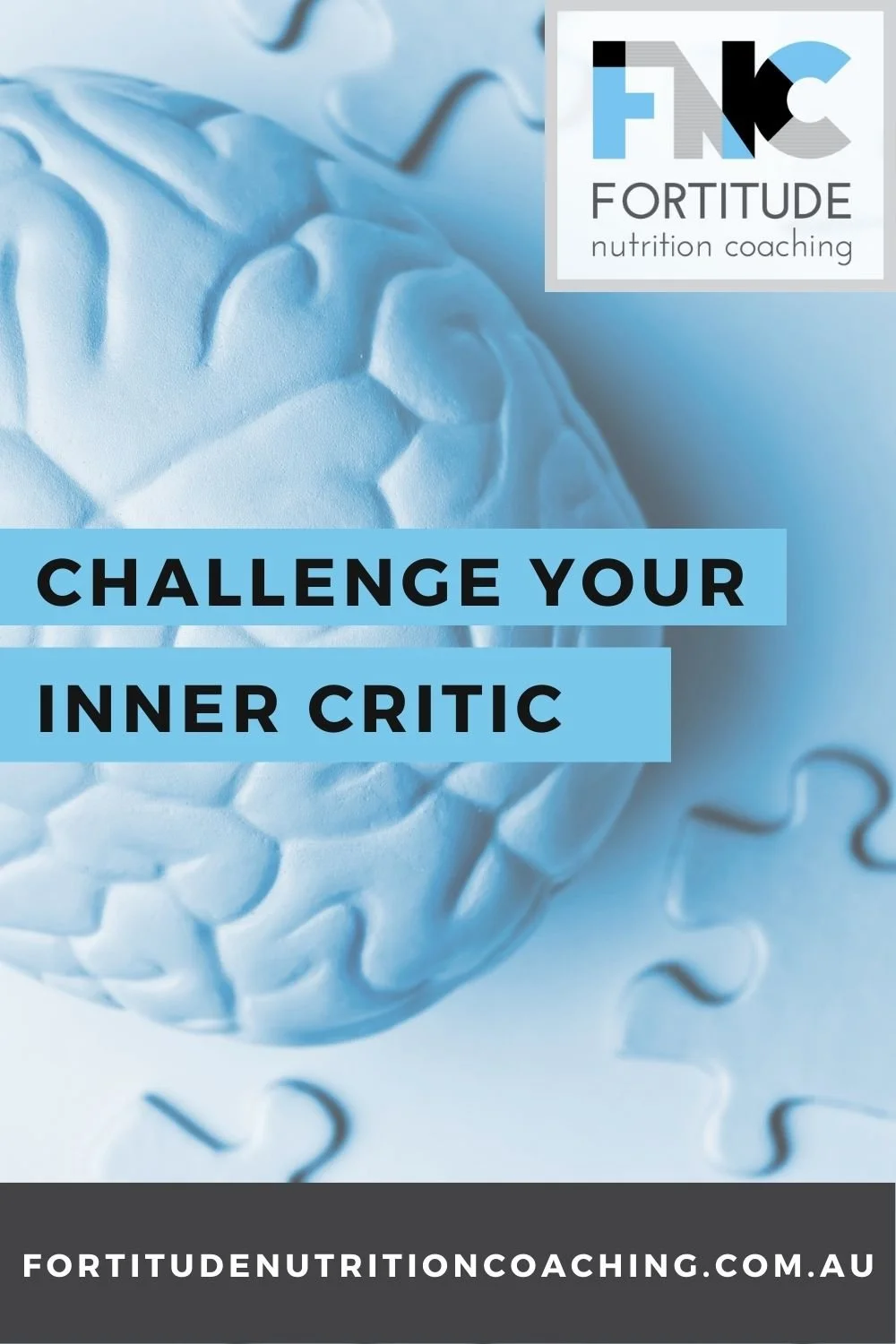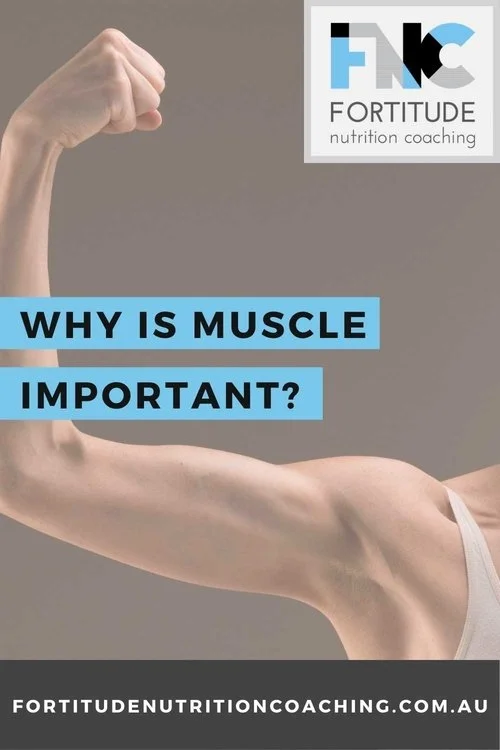10 ways to use intuitive eating approaches whilst tracking your Calories to reduce your risk of disordered eating.
Eating disorders (ED), when combined with disordered eating (DE) together, are estimated to affect 16.3% of the Australian population (Hay et al. 2015).
Athletes are at even greater risk of ED than non-athletes due to factors including increased pressure, and body shape/weight constructs specific to the chosen sport (Wells et al. 2020).
The estimated prevalence of DE in athletes is as high as 19% in men and 45% in women (Reardon et al. 2019).
With the above in mind, “diets” are not going anywhere.
Being smart about how you go about changing your body through nutrition, may reduce your risk.
What is Calorie/macro tracking?
For the remainder of this blog we will refer to Calorie/macro tracking as tracking.
Tracking is a form of external food intake regulation. Meaning food intake is controlled primarily by external numbers/metrics, as opposed to internalised hunger and fullness cues.
Tracking involves recording food intake such as variables including total Caloric and macronutrient intake (protein, carbohydrate, fat).
You can then manipulate your food choices towards nutrient targets that align with a certain goal.
The invention of My Fitness Pal has contributed to flexible dieting and IIFYM (If IT Fits Your Macros) becoming very popular approaches.
What are the benefits of tracking and when is it useful?
1) Tracking is precise, objective, and easily manipulated - making it desirable for higher-level goals. It’s perceived as the 'gold standard' among bodybuilding circles when accurate technique is used. Accuracy is achieved via weighing portions with digital food scales, and using government endorsed food composition data, etc.
2) Tracking may help build nutrition knowledge, including an understanding of food characteristics and how they contribute towards daily targets, as well as portion awareness.
3) Tracking provides reassurance and certainty that your food intake is targeted towards the goal in a way that is largely uninfluenced by thoughts and feelings.
4) 'Flexible dieting' often allows 'freedom' of food selection, meal timing, meal distribution. It may help to remove a rigid mindset towards food being "good" or "bad". However, flexible dieting/IIFYM is not necessarily free of obsessive behaviours, and rigid attitudes (Helms et al. 2019). For example; the expectation that everything must be tracked, and to precise targets is an example of rigid thinking.
5) It's relatively easy to coach and individualise which is probably why it’s so popular.
Risks of macro tracking?
1) Strong association with disordered eating and eating disorders -
3.1% of My Fitness Pal users report that it contributed to eating disorder symptoms, and 30% of subjects stated the app had "very much" contributed (Levinson et al. 2018).
40% of men recruited from a fitness related social media site who use My Fitness Pal, also perceive it as a contributing factor to disordered symptoms. Users of My Fitness Pal experience higher levels of dichotomous thinking, as well as shape, weight and eating concerns (Linardon and Messer 2019).
College students who reported using Calorie tracking software (ie; My Fitness Pal) experienced higher levels of eating concern and dietary restraint (Simpson and Masseo 2017).
2) Dichotomous thinking & rigid expectations
Inflexible thinking and overvaluation of energy intake, body mass, and shape. Deviations from ‘the plan’, ‘Calorie/macro targets’, or even the practice of tracking itself, may foster feelings of anxiety, and guilt, being a predictor for eating disorders (Simpson and Masseo 2017).
3) Compulsive perfectionistic behaviour towards nutrition targets. Anxiety and guilt may result. (Simpson and Masseo 2017).
5) May lead to a restrictive unbalanced diet. - The avoidance of certain foods for various reasons such as Calorie density or fat content may result in a diet that is insufficient in certain nutrients. For example; those who track their food might avoid salmon because of its higher Calories compared to lean meat. This may lead to insufficient intakes of certain omega-3 fats.
6) Low long-term sustainability. The practical & mental burden that comes with tracking may not be feasible in the long run, leading to a sense of inadequacy, and failure.
7) Quality of life impairment - Overall quality of life has been shown to suffer with Calorie/macro tracking. Perhaps you’re less likely to socialise as it impacts your ability to track your food. This intern affects overall total health.
"Overall, the numerical focus of health trackers might be detrimental, especially for individuals searching for ways to quantify their self-worth” - (Simpson and Mazzeo 2017).
Does tracking really cause disordered eating?
The former mentioned risks are based on observational research. Therefore, it can not be said that tracking causes eating disorders.
A high quality 2021 study (Hahn et al. 2021), suggests that tracking is just ‘there for the ride’, and doesn’t actually trigger disordered eating. However, the people used in this study were not seeking to change their bodies which may explain the results.
The results when considered against the subjects used allows us to narrow down the ‘tracking and disordered eating’ relationship a little.
1) Tracking may occur as a product of other factors already present in individuals who develop symptoms of disordered eating. It's effect may be neutral.
2) Tracking may be a driver to worsen the development of eating pathologies once already initiated.
3) Individual responses vary, meaning such approaches may be risky for some but not others.
What is intuitive eating?
Intuitive eating is an approach that seeks to foster a healthier attitude towards eating behaviours. Food intake is regulated by internal cues in a non-dichotomous nature, that rejects the idea of foods being either "good" or "bad" (Tylka and Kroon Van Diest 2013).
Benefits of intuitive eating.
1) Associated with lower Body Mass Index (BMI), disordered eating, body image concerns, psychological distress, psychological impairment, dichotomous thinking, emotional and uncontrolled eating (Linardon and Mitchell 2017; Caferoglu and Hoklu 2021).
2) Associated with numerous positive self-image, body appreciation, self-compassion, self esteem, and wellbeing (Linardon et al. 2017).
Are the components of IE directly responsible for the positive associations?
Can they maybe be isolated, and used independently?
Intuitive eating may be broken down into 3 main components which have all been associated with positives and reduced risk, even on their own.
1) Health-seeking body appreciation focused eating - Appreciation for what your body is and does. Eating to 'give back' to your own body. Body appreciation may positively influence body image, and reduce overvaluation of weight, and shape, as well as motivation to exercise for the purpose of weight loss.
2) Non-dichotomous thinking - (eg; success, fail/good, bad mindset) thought to be a large predicting factor of disordered eating risk.
3) Mindful eating and awareness. - Being aware of the present moment when eating, paying close attention to physical and emotional sensations. Being able to differentiate between internal physiological versus external eating cues (such as boredom).
Is Intuitive Eating the solution to tracking?
Lower BMI’s have been associated with higher levels of intuitive eating. However, this does not mean intuitive eating caused lower BMI.
Higher BMI is associated with greater body dissatisfaction, which links back to the root driver of why someone might start tracking their food - they desire to change their bodies.
Taken together two main ideas can probably be concluded.
If someone wants to change their body, they would probably choose tracking over intuitive eating, and naturally shift away from intuitive eating behaviours.
2. Intuitive eating is not an approach to use for weight loss. However, unintentional weight loss may occur.
Choosing the right tool for the job
As you have hopefully realised, each approach has its purpose, benefits, risks and costs. So the next step is choosing the right tool for you, your goal, at the present time. Here is a list of questions to ask.
1) What is the goal?
Weight change (Loss or Gain): Tracking is a possible strategy to explore. Intuitive eating is unlikely to prompt the required change in Calorie intake to elicit weight change.
Weight maintenance: When change is not desired, there (almost always) isn’t really any need to start tracking Calories and macros.
2) What is the level of the goal?
If the goal is high level, (such as getting extremely lean for a photoshoot), tracking may provide the needed precision and objectivity for the goal to be reached. If not, then it might NOT be worth taking the risk associated with tracking.
3) Are you at risk of disordered eating already?
If you have a history of disordered eating, body image concerns or show signs of a “good/bad” approach to food, eating, weight, shape etc, then maybe you’re not ready for tracking.
4) Would tracking be an efficient approach for you?
Given your current behaviours and how health-seeking you are in general, you might be able to achieve plenty of progress without tracking.For example, focusing on eating plenty of fruit and vegetables might be the thing to start with. Even this alone may do a ‘good enough’ job of controlling total Calories, resulting in weight loss.
10 Ways To Use Intuitive Eating Whilst Tracking
This is where we can start to view tracking and intuitive eating in a graded fashion, instead of ‘one or the other’.
Whilst intuitive eating and tracking are mutually exclusive, there is no reason why the components of intuitive eating can’t be mixed, matched and incorporated into tracking phases.
Health-seeking, body appreciation focused eating.
Consider food as a means to fuel function, feel good, and help the body thrive. Appreciate what your body can do as opposed to only how it looks.
1) Food logs and reflective question journals may help the development of this awareness. Questions may involve how certain foods make you feel, and how they may have influenced exercise/function.
2) Education around general healthy eating principles and the characteristics of food that align with thriving health are desirable. Working with an FNC coach or even following FNC on Insta can help.
Non-dichotomous thinking
Create expectations and guidelines that are as flexible as possible.
3) Viewing foods and meals for their intended purpose, recognising that not all foods need to be nutrient dense, or Calorie conscious. For example: social meals and indulgences have a purpose too.
4) Thinking about adherence and progress as a game of averages overtime. This means you can have some looser days and meals than others and still be 100% on track.
5) Being okay with plan B… or C. Be open to seeking the ‘next best feasible option’. Taking comfort knowing that you did the best within your circumstance. Move yourself away from perfectionism, and towards a “P’s get degrees” mentality.
6) Consider partial tracking. Ie; not tracking all the time. This may involve non-tracked meals and days, or even partial non-tracking days. You might also only track certain variables such as ‘Calories and protein only’.
7) Consider flexible tracking. This may involve Calories and macro ranges as opposed to ‘hard and fast’ targets.
Mindful eating & awareness
Create awareness of internalised cues and how eating makes you feel.
8) As per above, incorporate periods of non-tracking to provide opportunity to hone your non-tracking skills and get comfortable without My Fitness Pal. This will help you build confidence, rather than being afraid of eating/attending certain situations (ie; socially).
9) Mindful eating - Eat slowly, mindfully and free from distractions.
10) Implement urge surfing techniques to help you gain greater awareness of the inner whys behind food urges you experience. This involves doing another task or activity for a few minutes before revisiting the urge.
*Food logging, education and consultation also play an important role in encouraging awareness of choices and their impact
An FNC coach can help to guide you through such approaches using their FN’practitioners toolkit.
Take home points.
Disordered eating and eating disorders is a prevalent issue, especially in athletes.
Tracking is not risk-free. It's been associated with disordered eating. It probably doesn't cause it, but it may worsen it. Therefore, caution should be taken with tracking. Applying it only when worthwhile for short periods of time. It is not a one size fits all approach.
Intuitive eating involves eating to internal cues with a health-seeking, body appreciation focus. It's a 'healthy approach' that doesn't have the links to disordered eating that tracking has.
However, intuitive eating is not 'designed' for weight loss. Weight loss might occur unintentionally, 'by accident' though.
Tracking doesn't need to be 'all or none', rather part-time or flexible tracking are approaches that can be less rigid, more flexible.
Regardless of diet approach. Seeking to apply the concepts that underpin intuitive eating may reduce the risk of disordered eating.
1 on 1 Nutrition Coaching with Fortitude Nutrition Coaching
Are you looking for an understanding and supportive human to talk with, to help with advice and guidance? An objective set of eyes to see what you could improve to move towards your goal in the easiest possible way?
We work with real people and get real results. Sign up for 1 on 1 Nutrition Coaching today and get the support, guidance and accountability of a Fortitude Nutrition Coach.
References
Beals, K. A., & Manore, M. M. (2000). Behavioral, psychological, and physical characteristics of female athletes with subclinical eating disorders. International journal of sport nutrition and exercise metabolism, 10(2), 128–143. https://doi.org/10.1123/ijsnem.10.2.128
Bruce, L. J., & Ricciardelli, L. A. (2016). A systematic review of the psychosocial correlates of intuitive eating among adult women. Appetite, 96, 454–472.
Burnette, C. B., & Mazzeo, S. E. (2020). An uncontrolled pilot feasibility trial of an intuitive eating intervention for college women with disordered eating delivered through group and guided self-help modalities. The International journal of eating disorders, 53(9), 1405–1417.
Caferoglu, Z., & Toklu, H. (2021). Intuitive eating: associations with body weight status and eating attitudes in dietetic majors. Eating and weight disorders, in press. Available at: https://link.springer.com/article/10.1007%2Fs40519-021-01206-4#citeas [accessed 10 October 2021]
Grider, H. S., Douglas, S. M., & Raynor, H. A. (2021). The Influence of Mindful Eating and/or Intuitive Eating Approaches on Dietary Intake: A Systematic Review. Journal of the Academy of Nutrition and Dietetics, 121(4), 709–727.
Hagan, K. E., Forbush, K. T., & Chen, P. Y. (2017). Is dietary restraint a unitary or multi-faceted construct?. Psychological assessment, 29(10), 1249–1260.
Hahn, S. L., Kaciroti, N., Eisenberg, D., Weeks, H. M., Bauer, K. W., & Sonneville, K. R. (2021). Introducing Dietary Self-Monitoring to Undergraduate Women via a Calorie Counting App Has No Effect on Mental Health or Health Behaviors: Results From a Randomized Controlled Trial. Journal of the Academy of Nutrition and Dietetics, in press. Available at: https://jandonline.org/action/showPdf?pii=S2212-2672%2821%2900734-6#relatedArticles [accessed 10 October 2021]
Hay, P., Girosi, F., & Mond, J. (2015). Prevalence and sociodemographic correlates of DSM-5 eating disorders in the Australian population. Journal of eating disorders, 3, 19.
Helms, E. R., Prnjak, K., & Linardon, J. (2019). Towards a Sustainable Nutrition Paradigm in Physique Sport: A Narrative Review. Sports (Basel, Switzerland), 7(7), 172.
Levinson, C. A., Fewell, L., & Brosof, L. C. (2017). My Fitness Pal calorie tracker usage in the eating disorders. Eating behaviors, 27, 14–16. Available at: https://www.ncbi.nlm.nih.gov/pmc/articles/PMC5700836/ [Accessed 7 August 2018].
Linardon, J., & Messer, M. (2019). My fitness pal usage in men: Associations with eating disorder symptoms and psychosocial impairment. Eating behaviors, 33, 13–17.
Linardon, J., & Mitchell, S. (2017). Rigid dietary control, flexible dietary control, and intuitive eating: Evidence for their differential relationship to disordered eating and body image concerns. Eating behaviors, 26, 16–22.
Linardon, J., Tylka, T. L., & Fuller-Tyszkiewicz, M. (2021). Intuitive eating and its psychological correlates: A meta-analysis. The International journal of eating disorders, 54(7), 1073–1098.
Johnston, B. C., Kanters, S., Bandayrel, K., Wu, P., Naji, F., Siemieniuk, R. A., Ball, G. D., Busse, J. W., Thorlund, K., Guyatt, G., Jansen, J. P., & Mills, E. J. (2014). Comparison of weight loss among named diet programs in overweight and obese adults: a meta-analysis. JAMA, 312(9), 923–933.
McCaig, D., Elliott, M.T., Prnjak, K., Walasek, L., Meyer, C. (2019). Engagement with MyFitnessPal in eating disorders: qualitative insights from online forums. International Journal of Eating Disorders, 53(3), 404-411.
Romano, K. A., Swanbrow Becker, M. A., Colgary, C. D., & Magnuson, A. (2018). Helpful or harmful? The comparative value of self-weighing and calorie counting versus intuitive eating on the eating disorder symptomology of college students. Eating and weight disorders : EWD, 23(6), 841–848.
Simpson, C. C., & Mazzeo, S. E. (2017). Calorie counting and fitness tracking technology: Associations with eating disorder symptomatology. Eating behaviors, 26, 89–92.
Tylka, T. L., & Kroon Van Diest, A. M. (2013). The Intuitive Eating Scale-2: item refinement and psychometric evaluation with college women and men. Journal of counseling psychology, 60(1), 137–153.
Warren, J. M., Smith, N., & Ashwell, M. (2017). A structured literature review on the role of mindfulness, mindful eating and intuitive eating in changing eating behaviours: effectiveness and associated potential mechanisms. Nutrition research reviews, 30(2), 272–283.
Wells, K. R., Jeacocke, N. A., Appaneal, R., Smith, H. D., Vlahovich, N., Burke, L. M., & Hughes, D. (2020). The Australian Institute of Sport (AIS) and National Eating Disorders Collaboration (NEDC) position statement on disordered eating in high performance sport. British journal of sports medicine, 54(21), 1247–1258.










Tired of the "eating healthy" cycle that leads nowhere? Our blog unveils the blueprint for success. Say goodbye to vague intentions and hello to a clear Action Plan. Transform your eating habits with precision - from veggies to protein, breakfast to overcoming obstacles. Break free from the loop and embark on a fulfilling journey. Ready to achieve your goals with confidence? 🎯 Learn more: https://www.fortitudenutritioncoaching.com.au/blog/why-healthy-eating-doesnt-work